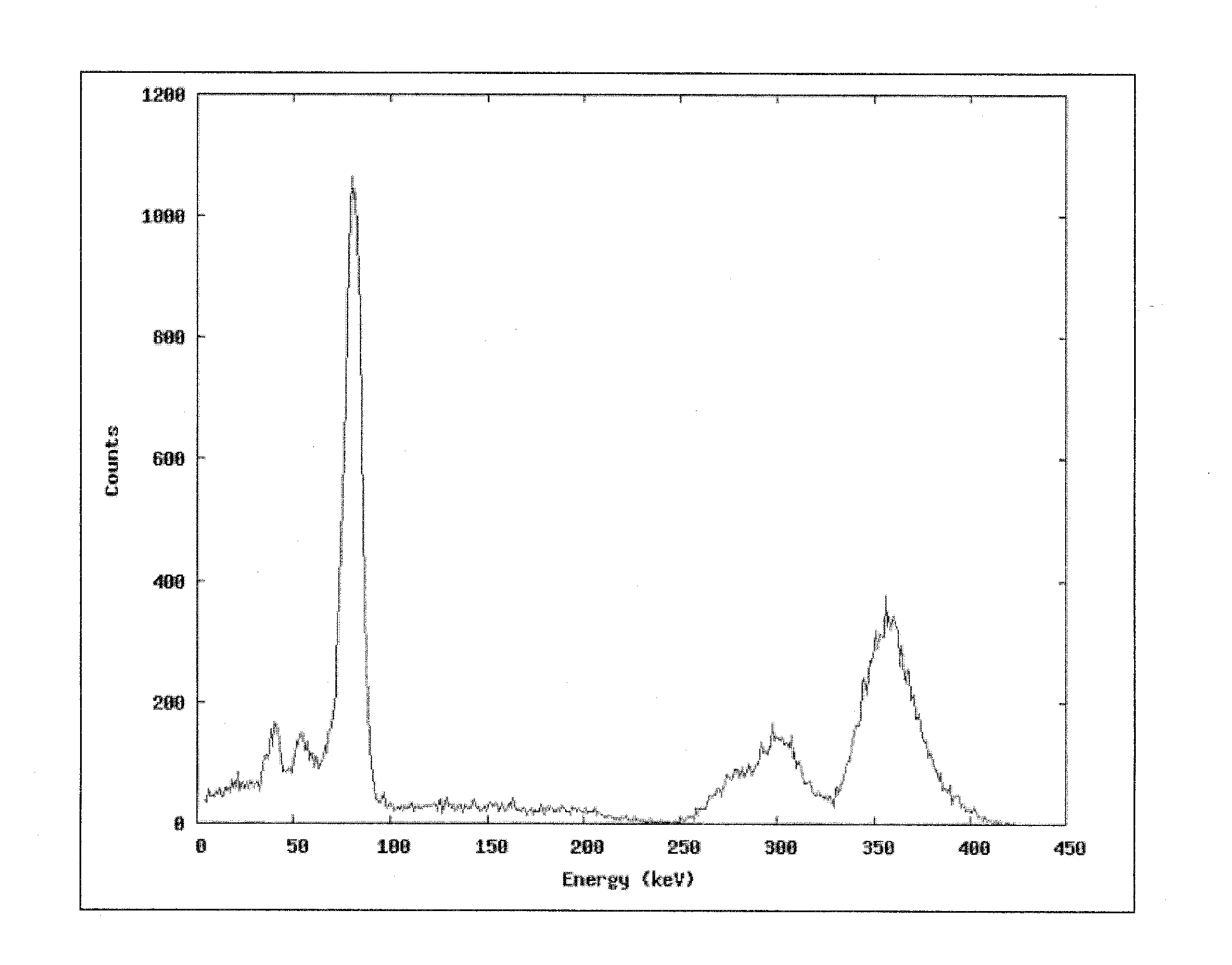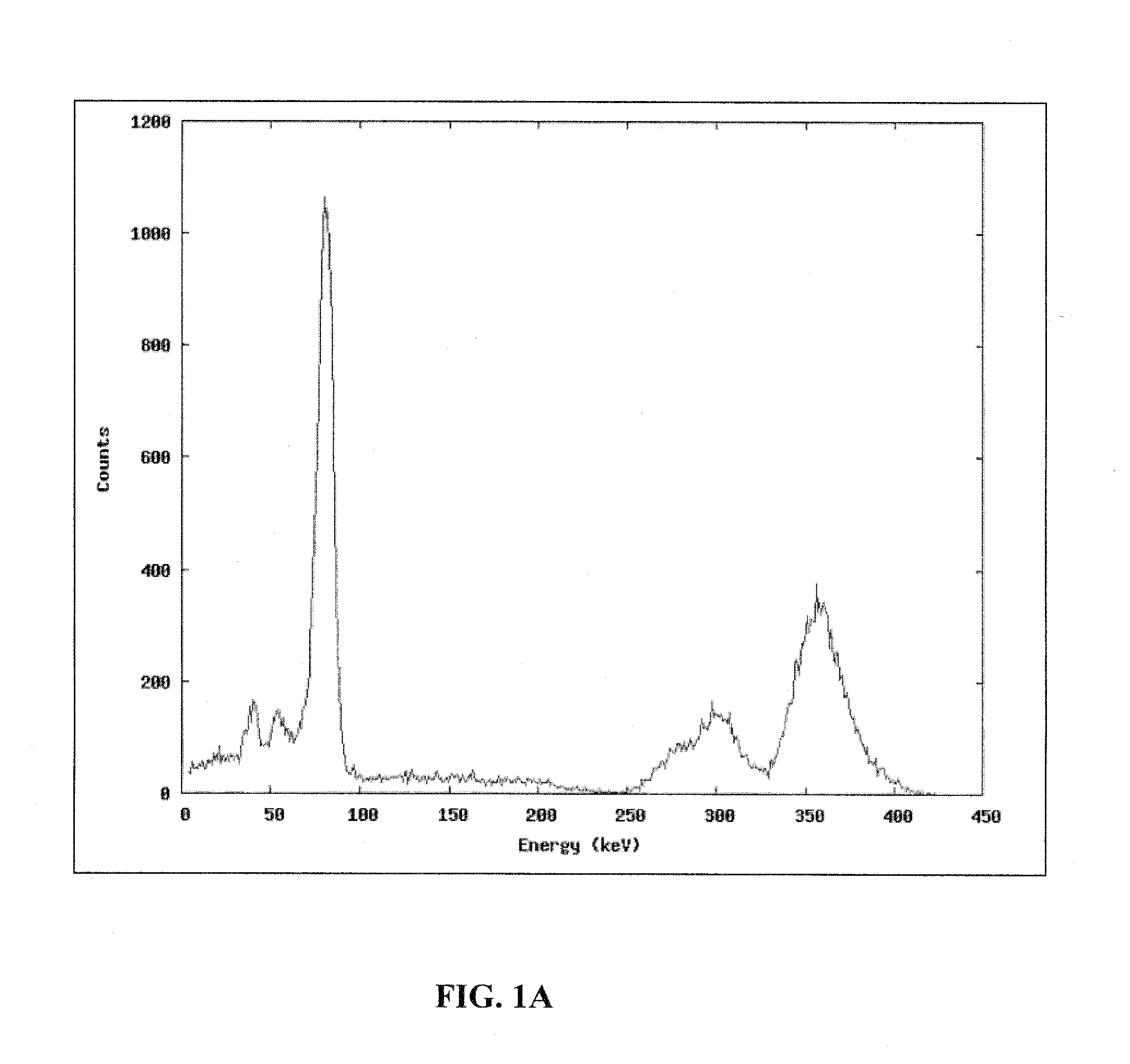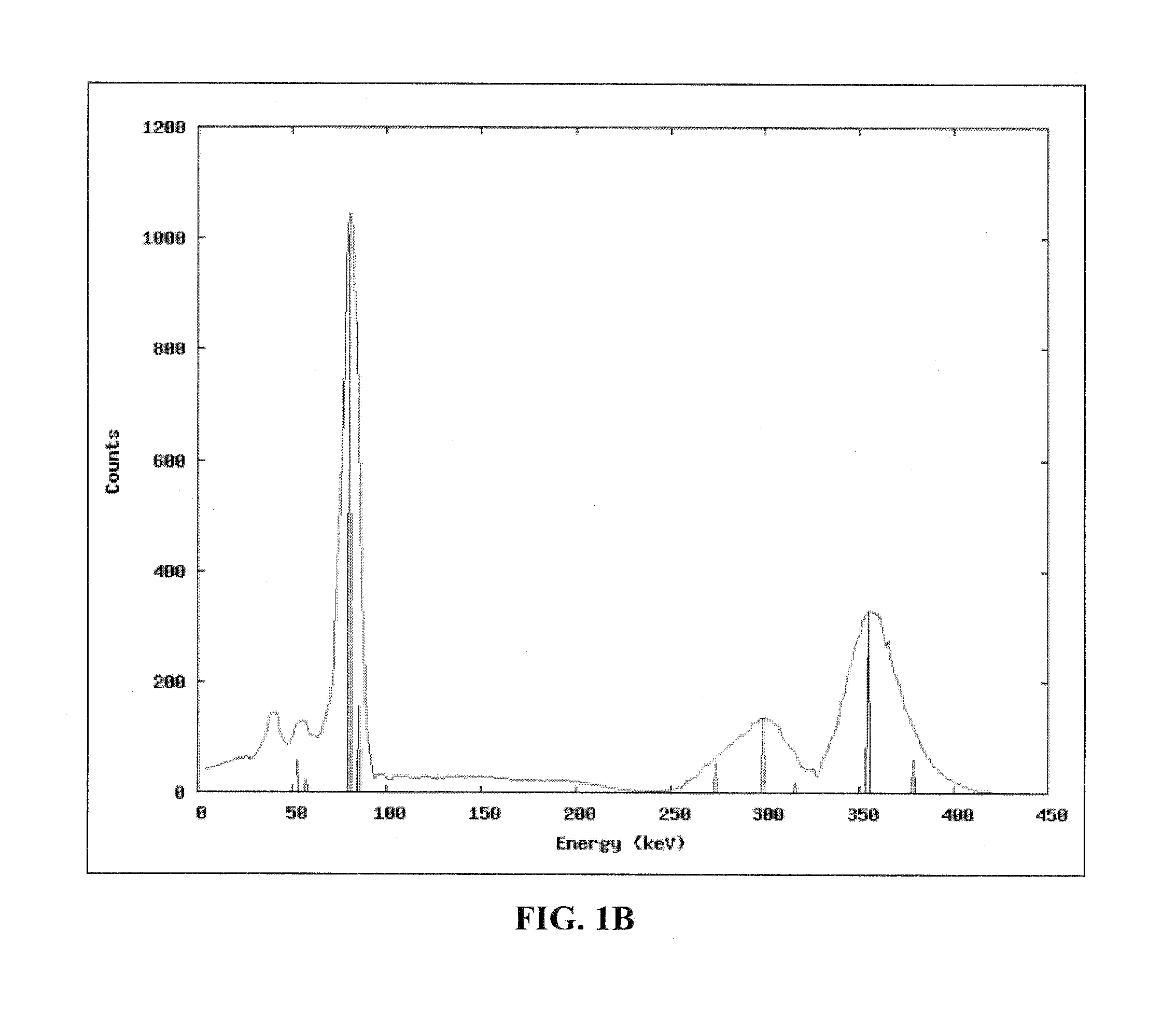Method and Apparatus for Spectral Deconvolution of Detector Spectra
a detector and spectral deconvolution technology, applied in the direction of material analysis using wave/particle radiation, x/gamma/cosmic radiation measurement, instruments, etc., can solve the problem of fifty-year-old problem of spectral deconvolution of nai(t1) scintillation detectors, enormous task of portal monitoring, etc., to achieve improved calibration functions, precise method of calibrating detectors, and improved accuracy
- Summary
- Abstract
- Description
- Claims
- Application Information
AI Technical Summary
Benefits of technology
Problems solved by technology
Method used
Image
Examples
example 1
[0195]The following illustration shows an approximation of an actual ASEDRA analysis for a synthetically generated Ba-133 spectrum and demonstrates the details of how a specific embodiment of the ASEDRA algorithm works. This analysis used the input files presented in FIGS. 20, 21, and 23, in which both denoising and background subtraction are turned off. Actual ASEDRA results are shown in later examples.
[0196]The original measured spectrum is shown in FIG. 23, which shows a synthetically generated Ba-133 sample spectrum, and starts out equal to the remainder spectrum. There are eight local maxima points on the spectrum. Of those local maxima, the highest energy is at 356 keV. The height of the remainder spectrum at that point is 1650 counts, so the first identified peak is characterized as having a photopeak energy of 356 keV and a peak height of 1650 counts.
[0197]The detector response function for the first identified photopeak is shown in FIG. 24. Referring to FIG. 24, the remaind...
example 2
[0208]Cesium-137, or Cs-137, provides a very simple example for peak search because it has only one visible photopeak. A Cs-137 detector spectrum can be simulated with the spectral generator described herein used to produce the simulated detector response of FIG. 17, and the sample description in FIG. 6-1, which indicates that there is a single peak at 661.7 keV with a height of 650 counts. Referring to FIG. 36, with respect to the input file for generating a simulated Cs-137 detector response function, the first column lists the energies, in keV, of the photopeaks, and the second column lists the photopeak heights in counts.
[0209]The process.txt input file providing input settings for simulated Cs-137 for this example, as shown in FIG. 37, provides information about the sample and the detector, indicates where other input files can be found, and allows some tuning of ASEDRA's behavior. Each of the input parameters found in process.txt is described herein. In this case, the backgrou...
example 3
[0224]Previous examples used idealized examples for demonstrating how the advanced synthetically enhanced detector resolution algorithm (ASEDRA) performs spectral deconvolution. A variety of additional complications arise in real laboratory conditions, such as changes in the background radiation, scattered radiation from nearby objects in the lab, and uncertainty in the energy and full-width half-max (FWHM) calibration curves. This example includes laboratory measurements, with a 5 cm square cylindrical NaI detector, of samples that are similar to the previous examples. Additionally, a plutonium beryllium source is included to show ASEDRA's performance on a highly convoluted detector spectrum.
[0225]Energy calibration becomes more significant when real detectors are used. Table 8-1 shows the energy calibration data for this example.
TABLE 8-1Energy calibration dataChannelEnergy (keV)6253.29781.0334302.9387356.0705661.712391173.214021332.5
[0226]A measured Cs-137 spectrum is shown in FI...
PUM
 Login to View More
Login to View More Abstract
Description
Claims
Application Information
 Login to View More
Login to View More - R&D
- Intellectual Property
- Life Sciences
- Materials
- Tech Scout
- Unparalleled Data Quality
- Higher Quality Content
- 60% Fewer Hallucinations
Browse by: Latest US Patents, China's latest patents, Technical Efficacy Thesaurus, Application Domain, Technology Topic, Popular Technical Reports.
© 2025 PatSnap. All rights reserved.Legal|Privacy policy|Modern Slavery Act Transparency Statement|Sitemap|About US| Contact US: help@patsnap.com



